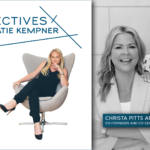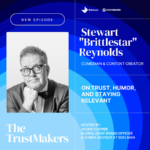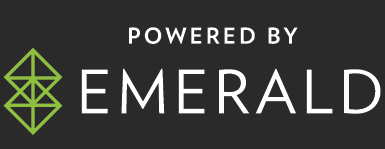By Charlie Fletcher, Freelance Writer
Artificial intelligence (AI) didn’t come here to fix your email funnel. It’s not your new junior account manager. And it definitely wasn’t invented to crank out one more lifeless SEO blog post. But that’s how most marketers are using it, tacking AI onto tasks they already know how to do, hoping for marginal gains.
Yawn. If your “AI strategy” is just automating the same safe plays, you’re not innovating. AI isn’t a cheat code for efficiency. It’s a sandbox for big, sometimes uncomfortable creativity. It’s time to shift your mindset. Rather than use AI to optimize what already exists, use it to help invent what doesn’t. Stop treating it like your customer relationship management (CRM) and start treating it like an innovative muse. Welcome to the anti-playbook for all things AI and marketing.
Automate Less. Experiment More.
Be honest, you didn’t get into marketing to tweak meta descriptions and schedule posts. You got in for the thrill of ideas that shouldn’t work but do. AI in marketing isn’t here to just babysit your to-do list; it’s here to partner with your intuition. Use AI like a creative playground where nothing’s too dumb to try until it surprises you. The return on investment (ROI) on weird and innovative is often higher than another split test on call-to-action (CTA) buttons.
AI is a playing field for ideation. Instead of simply prompting it to write ad copy, try to be more creative. Ask it to draft the worst tagline imaginable and see what ideas emerge. Feed it your product and challenge it to pitch it to aliens. Try multiple AI tools to brainstorm creative angles. The results of these experiments won’t always be directly applicable, but they can get your creativity flowing and inspire you to look at your product and customers in new ways.
Want an edge? Let AI complement your ideas, becoming your sketchpad not your assembly line. Your next best idea just might start as a joke in an AI prompt. Build structured time into your week for creative exploration with AI. During these times, don’t worry about key performance indicators (KPIs), just focus on curious prompts and open-minded exploration.
Optimization Is Killing Originality
Look, everyone loves a good conversion rate, but if your brand voice now reads like a high-performing LinkedIn post, you’ve lost the attention. The endless pursuit of “better” is killing “brave.” A/B testing has become the equivalent of death by papercuts: every tweak makes your copy more efficient — and more boring.
The truth is that customers recognize when content is inauthentic, formulaic, and repetitive, and they can tune it out. To truly stand out, you need to break the formula and go beyond advertising, focusing on unique organic brand recognition and customer connections. Use AI to flip your own script. Feed it your brand voice, then ask it to rewrite in the voice of a pirate or a nihilist poet. Sound ridiculous? Exactly. It’s the only way to see what you’re missing when you play it safe.
Stop polishing your content and start pushing new ideas. Use AI as a mirror and a hammer; reflect, and then rebuild. Let it surface surprising perspectives that you can shape into memorable, creative ideas.
Real Innovation Requires Risk — Yes, Even with AI
Too many brands are using AI as a safety net and missing its potential. Want to see AI used well? Look at brands getting messy with it. Heinz used it to generate surreal ketchup art. Coca-Cola trained it to remix their visual assets like Warhol on a Red Bull binge. These weren’t optimization exercises — they were experiments with uncertain outcomes. And that’s the whole point. Using AI effectively requires a tailored approach, driven by strategic intent and inspired by a willingness to take calculated risks to embrace digital transformation. Make space in your workflow for those risky drafts and provocative pitches, because they just might become your brand’s most resonant moments.
If your AI outputs always make it to campaign day, you’re doing it wrong. Real innovation feels uncomfortable. It raises eyebrows. Maybe even a few alarms. If your idea doesn’t spark a “Can we actually say that?” moment, dig deeper. AI should be the starting point for bold marketing ideas, rather than an excuse for safe ones.
Trust Issues: Ethics, Hype, and the AI Backlash
Here’s the catch: while marketers are busy falling in love with AI, audiences are growing wary. Consumers know when a brand’s voice suddenly sounds like a robot with a master’s in business. They’re skeptical of AI everything, from fake influencers to AI-generated apologies. Toss in navigating risky gray areas (copyright, biased data, and consumer privacy), and suddenly “AI-first” doesn’t sound so clever.
Effective use of AI requires proper understanding. This means digging into how your tools are trained, where your content comes from, and how your audience feels about AI-created media. Spoiler: If it feels lazy or deceptive, it probably is.
Marketers need to think twice before chasing shiny objects. Are you using AI to enhance your humanity or erase it? If your campaign can’t pass a basic sniff test for ethics and transparency, it’s not innovative. It’s reckless.
Build internal guardrails and address ethical concerns. Disclose when content is AI-generated, and educate your audience on how and why you’re using these tools. Create a teamwide ethics checklist that includes when to use AI, when to skip it, and who’s responsible for vetting content. Your reputation depends more on conscious decisions than on clever prompts.
Make AI Your Intern, Not Your Boss
AI isn’t the strategist. AI should never be steering your brand. It doesn’t know your market like you do. It doesn’t feel cultural shifts. It doesn’t crave risk, or understand why something “just feels right.” What it can do is turn a kernel of an idea into ten possible directions, push you past your default mode, and help you make a beautiful mess. Think of it as a collaborator rather than the one calling the shots.
Think of AI as a creative digital intern: eager, fast, a little creative, and completely disposable. Feed it your half-baked ideas. Let it expand, remix, and challenge your thinking, but don’t ever let it sign off the final draft. Human creativity, judgment, and risk-taking are still irreplaceable.
Here’s how you get the balance right: start by using AI during early stages of brainstorming or writing. Let it open the ideas floodgate. Then switch into editorial mode. Refine, question, and push back. Use your instincts to make the calls only a human can. Let AI be the engine, but you stay in the driver’s seat.
Your challenge? Go write the campaign that makes your chief marketing officer (CMO) sweat, and ultimately surpasses all the competition.











